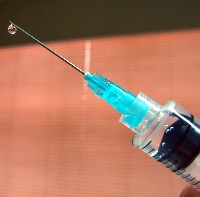 Engineers and computer scientists at Rochester Institute of Technology in New York and University of Illinois in Urbana have developed a mathematical model to determine the optimum combination of vaccines for children that keeps the injections affordable yet remains financially attractive to manufacturers. The team led by RIT’s Rubén Proaño published their findings last month in the operations management journal Omega (paid subscription required).
Engineers and computer scientists at Rochester Institute of Technology in New York and University of Illinois in Urbana have developed a mathematical model to determine the optimum combination of vaccines for children that keeps the injections affordable yet remains financially attractive to manufacturers. The team led by RIT’s Rubén Proaño published their findings last month in the operations management journal Omega (paid subscription required).
The problem for clinicians and drug makers stems from the use of vaccine combinations that protect children from multiple diseases with one injection. These combination vaccines, however, can be prohibitively expensive in developing countries, which results in delays in providing the vaccines and potentially putting children at risk.
Proaño and his team developed a mathematical model that addresses this problem, by taking into account key factors in providing affordable vaccines for developing countries. One of those factors is worldwide vaccine manufacturing capacity. Drug makers generally give first priority to profitable pharmaceuticals, thus reducing the production capacity for inexpensive and less profitable vaccines.
Another factor is the optimal price for combination vaccines that can be offered to different market segments. Making combination vaccines affordable and available to developing countries helps spread out the high research and development costs associated with vaccine development and could lead to lower prices for vaccines in industrialized countries.
Proaño approached a solution by viewing the global vaccine market as a system, in particular the supply chain of vaccines. The model considers each combination vaccine as a bundle of antigens that can be sold as a single item. Proaño says it ensures that the solution satisfies vaccine demand in different countries and different immunization schedules.
The optimization models, says Proaño, “recommend how many vaccine doses each market segment should buy from the different vaccine producers.” He adds that they also recommend “the range of prices per dose that will result in savings for the buyer and that will be financially attractive to the producer.”
Read more: Study IDs More Efficient Vaccine Supply Chain Processes
Photo: ZaldyImg/Flickr
* * *

 RSS - Posts
RSS - Posts
You must be logged in to post a comment.